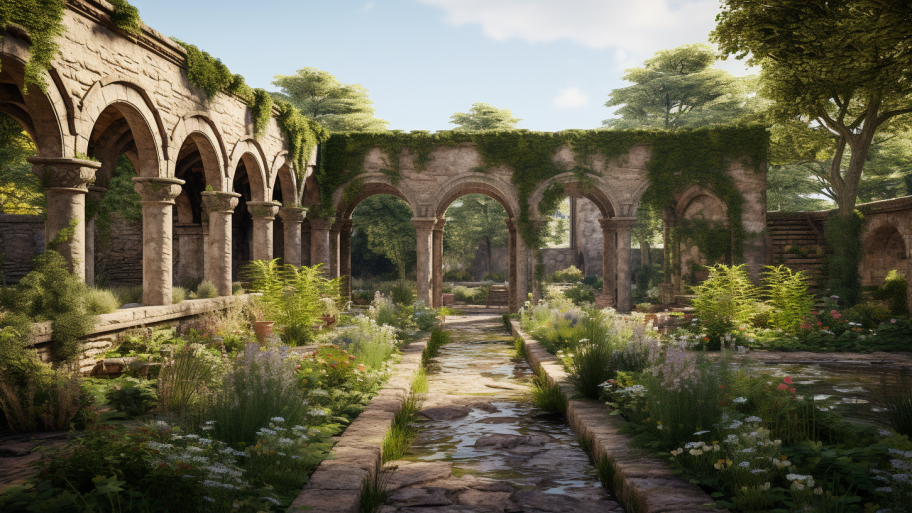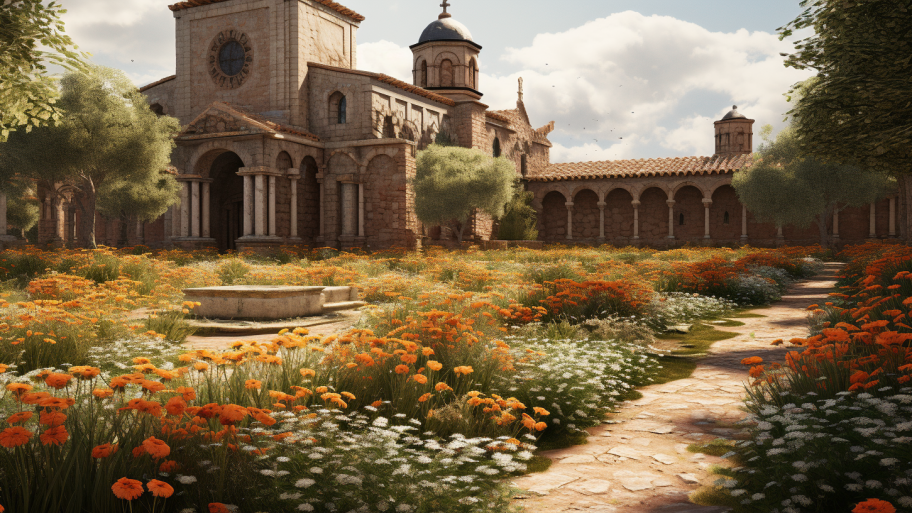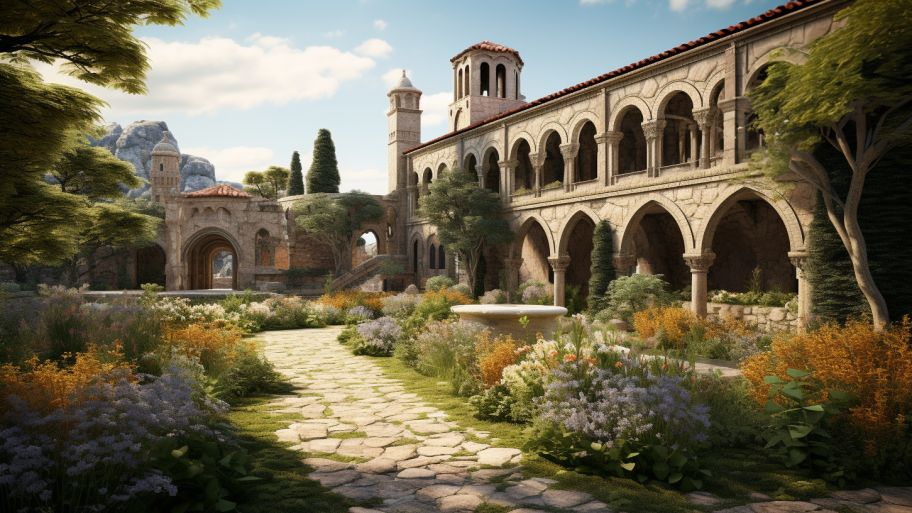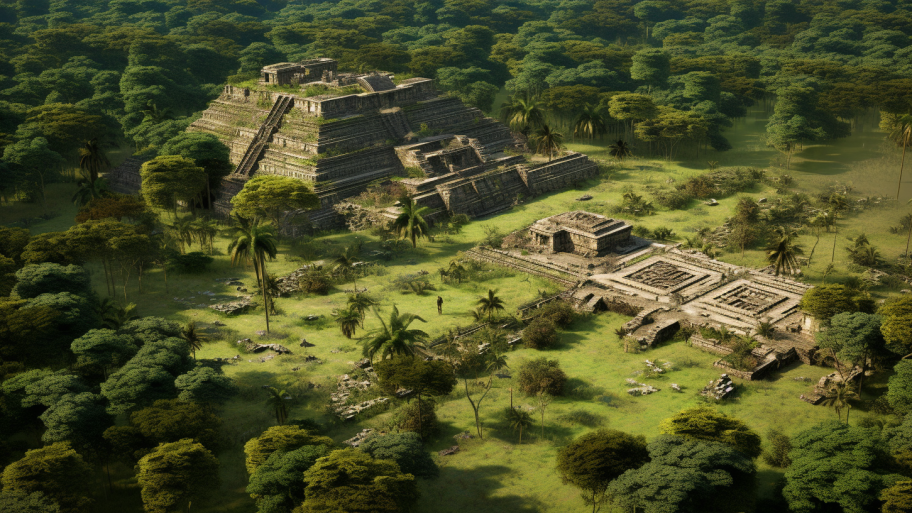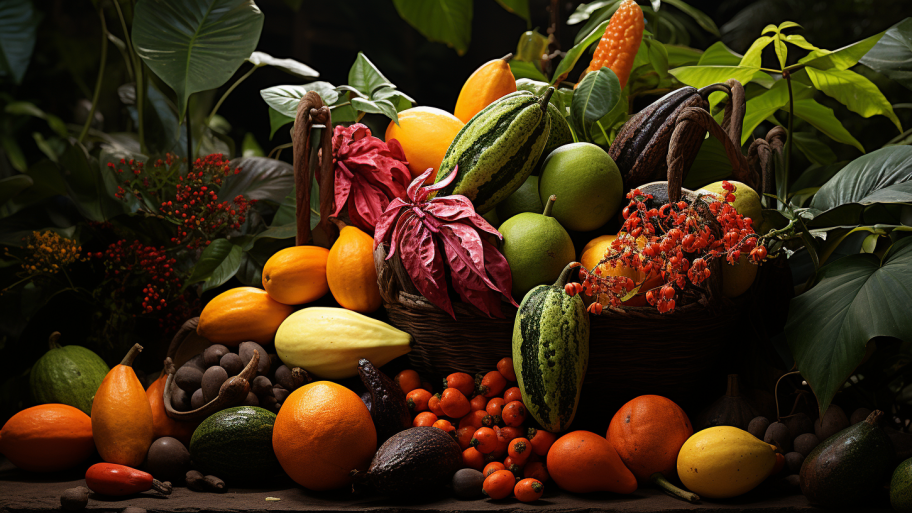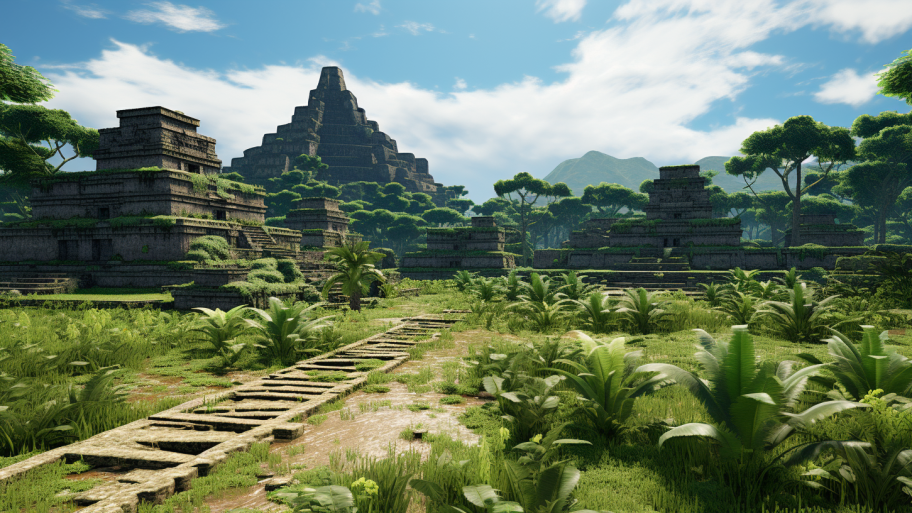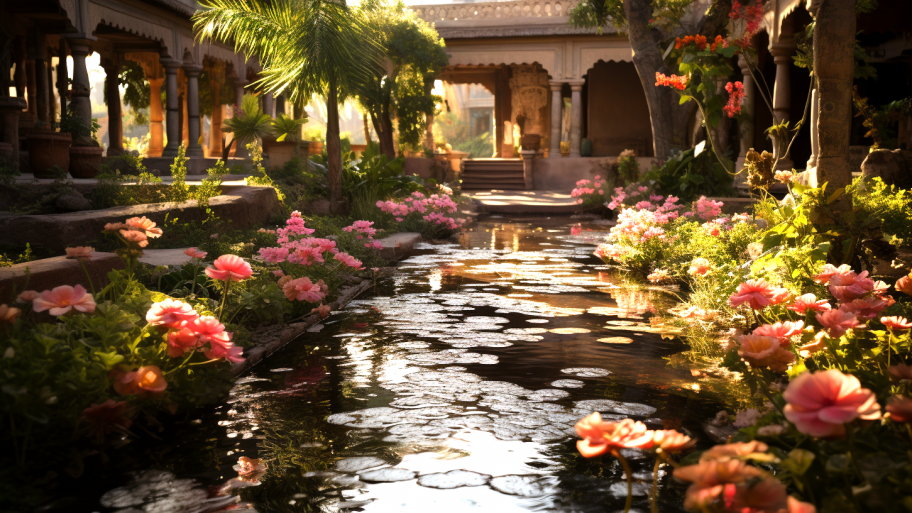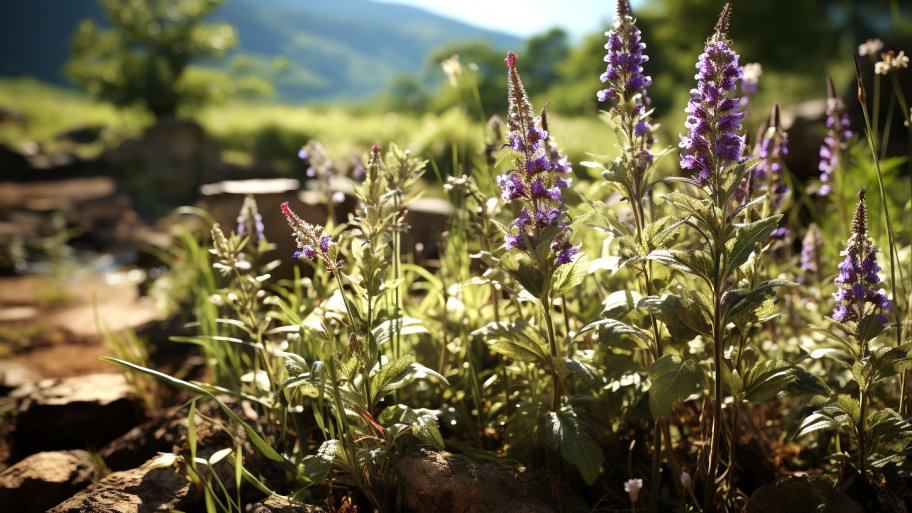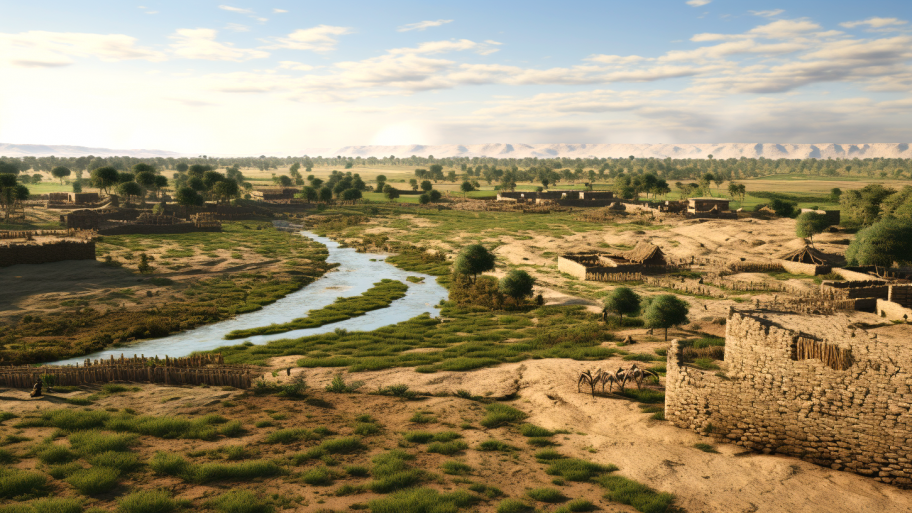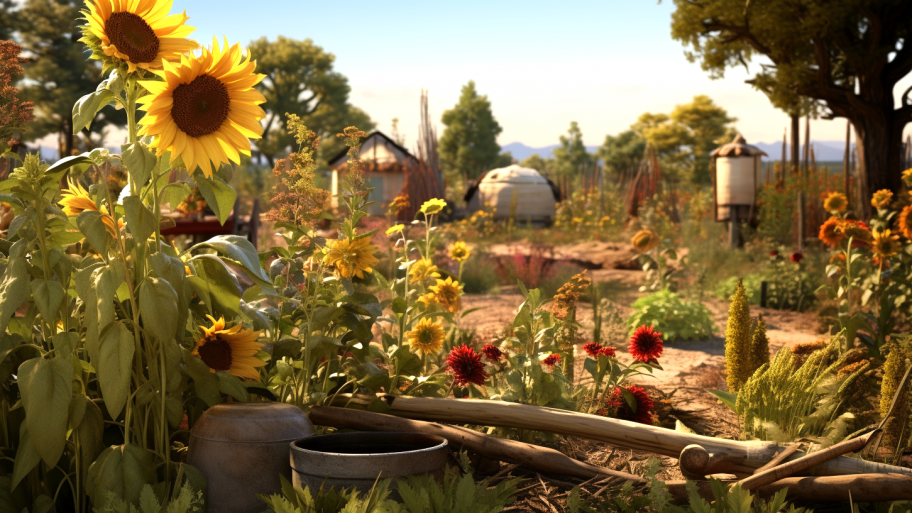The design of medieval gardens, particularly those found within monastic settings, was shaped by a combination of practical, spiritual, and aesthetic considerations. These gardens were carefully planned to provide sustenance, medicine, and a place for contemplation. Key aspects of medieval garden design included the use of walled enclosures, symmetrical layouts, raised beds, and water features, all contributing to an atmosphere…
